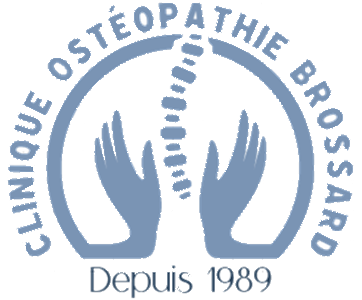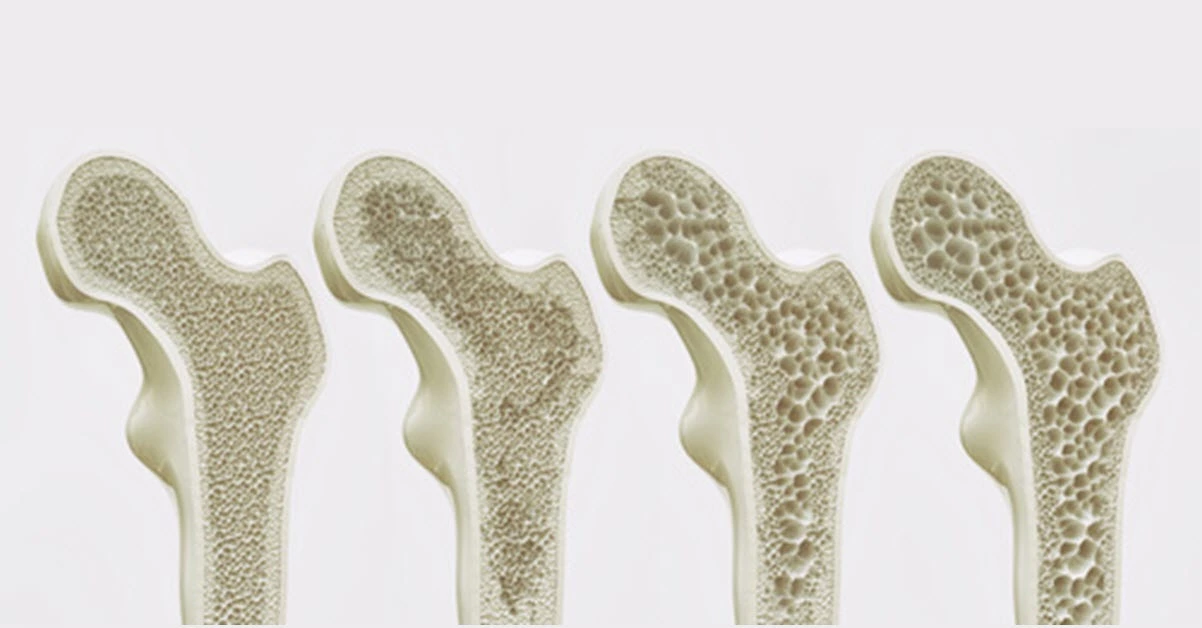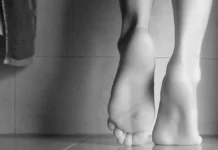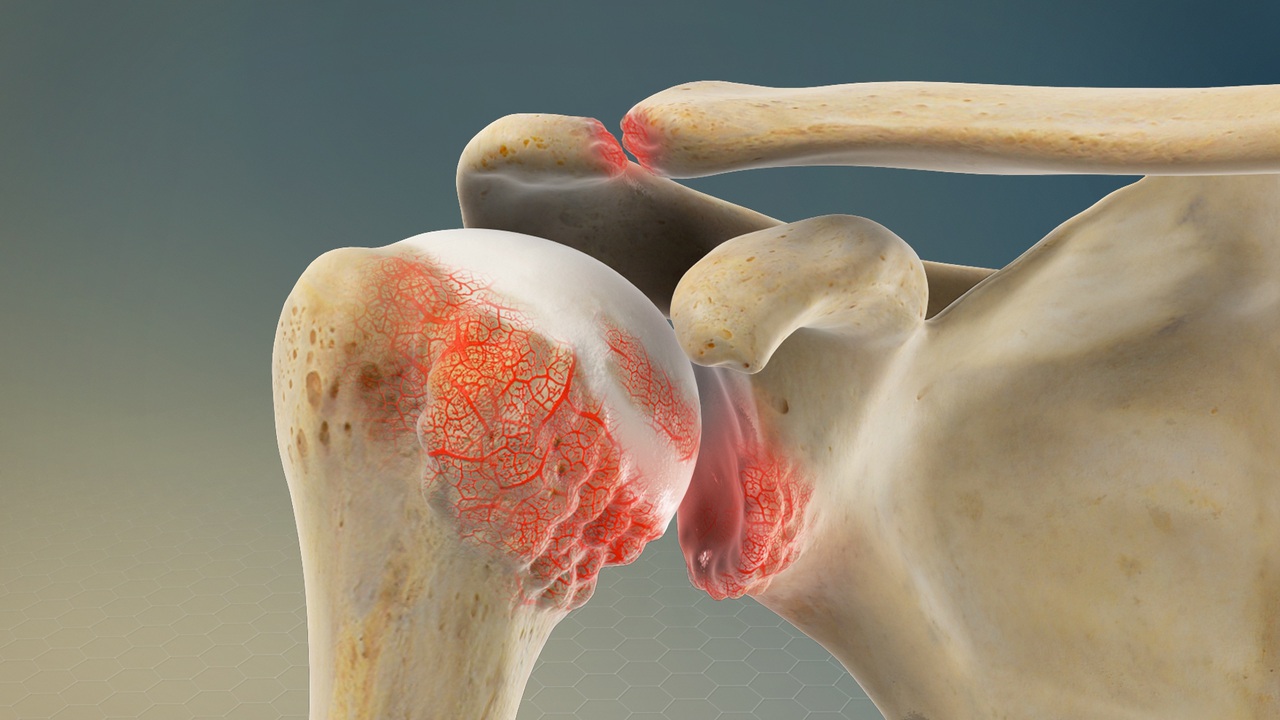Introduction
The understanding of spinal health and the treatment of its disorders have been significantly enhanced by the pioneering work of Dr. Murray Kirkaldy-Willis, who introduced the concept of the “degenerative cascade” in the 1970s. This model has profoundly influenced the fields of orthopedics, neurosurgery, and particularly osteopathy, providing a framework for comprehending the progressive nature of spinal degeneration.
Dr. Kirkaldy-Willis, a Canadian orthopedic surgeon and neurosurgeon, conceptualized spinal degeneration as occurring in three distinct phases: dysfunction, instability, and stabilization. These phases help in understanding how the spine, under continuous and varying pressures, responds and adapts over time. His model delineates not just the pathophysiology of spinal degeneration but also highlights the body’s attempts to stabilize itself, which, while protective in nature, often lead to further complications.
Legacy and Contributions of Dr. Murray Kirkaldy-Willis
Dr. Murray Kirkaldy-Willis’s legacy in spinal health is both groundbreaking and enduring. His Degenerative Cascade model revolutionized the understanding of spinal degeneration, transforming how practitioners approach diagnosis and treatment. Before his work in the 1970s, spinal disorders were often treated with a narrow, symptom-focused approach. Dr. Kirkaldy-Willis introduced a more comprehensive perspective, conceptualizing degeneration as a progressive process occurring in three phases: dysfunction, instability, and stabilization. This insight provided a clearer pathophysiology of how the spine deteriorates over time and how the body attempts to adapt or compensate.
His contributions extended beyond the theoretical. Dr. Kirkaldy-Willis emphasized conservative care, advocating for non-surgical interventions such as physical therapy, targeted exercise, and lifestyle modifications. His work inspired a shift away from premature surgeries, prioritizing holistic, patient-centered treatment strategies. His research has profoundly influenced orthopedics, neurosurgery, osteopathy, and sports medicine, providing a universal framework still in use today.
As an educator and mentor, Dr. Kirkaldy-Willis trained and inspired a new generation of spine specialists, further amplifying his impact. His seminal publications, such as Managing Low Back Pain, remain foundational texts. Recognized globally for his contributions, he left a legacy of improved patient care and a deeper understanding of spinal biomechanics.

The Degenerative Cascade Explained
The degenerative cascade begins with the dysfunction phase, where early degenerative changes occur, such as minor disruptions in the alignment and function of the spine. This phase is often marked by intermittent pain and reduced mobility, which can be subtly managed through osteopathic manipulative treatments aimed at improving joint mobility and reducing inflammation.
As the cascade progresses to the instability phase, the structural integrity of the spine begins to compromise, leading to increased movement between the vertebrae. This can exacerbate wear and tear, prompting the body to form osteophytes in an attempt to stabilize the spine. In osteopathy, this phase may require a combination of manual therapy and stabilization exercises, alongside lifestyle adjustments to support spinal health.
The final phase, stabilization, occurs as the body tries to arrest the degenerative process, often leading to reduced spinal mobility due to the formation of larger osteophytes and, in some cases, fusion of the joints. Osteopathic care at this stage focuses on maintaining as much mobility as possible and managing pain, emphasizing the importance of a tailored approach that addresses both the physical and functional impacts of spinal degeneration.
Significance and Impact
The concept of the degenerative cascade has greatly influenced how osteopaths view and treat spinal disorders. It underscores the importance of early detection and intervention, which are key in managing the progression of spinal degeneration. This proactive approach not only helps in alleviating immediate symptoms but also in slowing the degenerative process, ideally preventing the onset of more severe complications.
Dr. Kirkaldy-Willis’s model has encouraged a comprehensive approach to spinal health, blending traditional medical understanding with osteopathic philosophy. It continues to guide osteopaths in their practice, providing a robust framework for assessing, diagnosing, and treating spinal conditions in a holistic and patient-centered manner.
Certainly! Building on the introduction, the next section can delve deeper into the specifics of the degenerative cascade as conceptualized by Dr. Murray Kirkaldy-Willis, focusing on the first phase: Dysfunction.
Understanding the Degenerative Cascade
The degenerative cascade, a concept introduced by Dr. Murray Kirkaldy-Willis, offers a detailed explanation of the mechanisms underlying spinal degeneration. This model has revolutionized the understanding of spinal pathology, particularly in how we approach its diagnosis and treatment in clinical practice. By dividing the progression of spinal degeneration into three distinct phases—dysfunction, instability, and stabilization—this framework allows clinicians and therapists to better tailor their interventions based on the specific stages of degeneration.
Defining the Concept and its Clinical Significance
The degenerative cascade describes the sequence of events that lead to the structural and functional deterioration of the spine over time. This progression is not merely a result of aging but is often precipitated by an interplay of mechanical stresses and biological responses that compromise spinal integrity. Understanding this cascade is crucial because it helps clinicians predict the course of spinal degeneration and implement early interventions that can potentially alter the disease trajectory and improve patient outcomes.
The clinical significance of the degenerative cascade lies in its ability to provide a structured approach to spinal disorders. It informs a range of medical disciplines, including orthopedics, neurosurgery, and osteopathy, influencing everything from preventive strategies to surgical decisions. This model also facilitates a better understanding among clinicians about how interventions at various stages can delay or prevent the onset of severe disability.
The Three Phases of Vertebral Degeneration
1. Dysfunction
The first phase, dysfunction, is characterized by initial changes that may not yet cause significant pain or disability but signify the beginning of degenerative processes. These changes include minor disruptions in the biomechanics of the spine, such as slight misalignments, muscle imbalances, and early wear and tear on the intervertebral discs and facet joints. Clinically, patients might report intermittent back pain, stiffness, especially in the morning, or a feeling of discomfort after prolonged inactivity.
From a therapeutic perspective, the dysfunction phase is critical for early intervention. Treatments are often conservative and may include physical therapy, osteopathic manipulative treatments, and lifestyle modifications to improve posture and spinal alignment. Early detection and management can help maintain spinal function and prevent progression to more debilitating stages.
2. Instability
As the cascade progresses, the second phase—instability—emerges. This phase is marked by a significant increase in the motion between vertebrae due to further deterioration of the discs and joints. The biomechanical integrity of the spine is compromised, leading to abnormal motion or alignment which places additional stress on the vertebral structures. Clinically, this phase is associated with more frequent and severe pain episodes, increased radiographic evidence of degenerative changes, and a heightened risk of acute exacerbations.
The goal of managing the instability phase is to stabilize the spine through a combination of therapeutic exercises that strengthen the musculature supporting the spine, and possibly interventional procedures such as injections or minimally invasive surgeries. At this stage, a multidisciplinary approach is often required to manage symptoms and support spinal stability effectively.
3. Stabilization
The final phase, stabilization, occurs as the body attempts to naturally stabilize the degenerative processes. This phase is characterized by a reduction in the mobility of the affected segments, often due to the formation of large osteophytes and, in some cases, natural fusion of the vertebrae. Although these changes can decrease the range of motion and flexibility, they often result in a decrease in pain compared to the instability phase.
Treatment in the stabilization phase focuses on maximizing the remaining functionality of the spine and managing symptoms. Rehabilitation aimed at enhancing the strength and flexibility of the spinal and surrounding muscles is crucial. Additionally, pain management strategies, including pharmacological interventions and lifestyle adjustments, play a significant role in improving quality of life for patients.
Detailed Examination of Each Phase
Understanding the degenerative cascade requires a detailed examination of each of its three phases: dysfunction, instability, and stabilization. Each phase presents unique challenges and considerations for clinical practice, particularly in how these stages are managed to optimize patient outcomes and prevent further progression of spinal degeneration.

Dysfunction (Dysfonction): This initial stage depicts a spinal segment with normal anatomical structure but experiencing early wear and tear, potentially leading to pain or discomfort. The visual emphasizes the intervertebral disc and vertebral body in a seemingly strained state, suggesting compromised functionality.
Instability (Instabilité): The middle phase highlights increased movement or excessive motion between the vertebrae. The illustration shows a vertebral segment with exaggerated arrows indicating instability, coupled with lines suggesting joint stress or pain. This phase reflects a period where spinal segments lose stability, contributing to greater discomfort and potential injury risks.
Stabilization (Stabilisation): In this final phase, structural adaptation occurs. The vertebral bodies appear fused or more rigid, and the intervertebral disc seems significantly reduced in height or compressed. This stage often results in decreased movement but may also lead to chronic stiffness or discomfort due to degenerative changes and compensatory alterations.
Dysfunction Phase
Description and Potential Causes
The dysfunction phase marks the initial stage of spinal degeneration. During this period, subtle changes occur within the spine’s structures, primarily affecting the intervertebral discs and facet joints. These changes are often the result of biomechanical stresses such as poor posture, repetitive movements, and inadequate ergonomic support during daily activities. Genetic predispositions and overall health conditions, like obesity and diabetes, can also contribute to early spinal dysfunction.
Clinical Manifestations
Patients in the dysfunction phase might experience intermittent and mild symptoms that can include back stiffness, discomfort after periods of inactivity, and a reduced range of motion. The pain is usually localized and does not radiate. This phase is often overlooked because the symptoms are not severe and can be easily attributed to fatigue or minor strains.
Instability Phase
Description and Consequences
As the condition progresses, the spine enters the instability phase. This phase is characterized by a significant deterioration in the ability to maintain the natural alignment and motion control of the spine due to further degradation of discs and joints. The loss of disc integrity and height leads to increased mobility between vertebrae, which can result in misalignment and abnormal joint mechanics.
Body’s Response to Instability
In response to increased mechanical stress and instability, the body initiates several adaptive mechanisms to stabilize the spine. These include the thickening of ligaments and the formation of osteophytes (bone spurs). While these responses are intended to restore stability, they often exacerbate the problem by causing joint stiffness and potential nerve impingement, leading to pain and functional limitations.
Stabilization Phase
Description and Potential Complications
The stabilization phase is the body’s final attempt to arrest the degenerative process. During this stage, natural fusion of the vertebrae may occur, along with substantial osteophyte formation. These changes lead to a significant reduction in spinal mobility at the affected segments, theoretically decreasing pain caused by movement. However, the stiffness and altered biomechanics can place additional stress on adjacent segments, potentially leading to a phenomenon known as adjacent segment disease.
Symptoms and Long-Term Outcomes
Symptoms in the stabilization phase can vary widely but typically include a decrease in acute pain episodes, replaced by chronic, dull discomfort and a noticeable limitation in spinal mobility. The long-term outcomes for patients in this phase can include chronic pain management issues, decreased quality of life due to limited mobility, and increased dependence on medications or interventions to manage symptoms.
Clinical Implications
Dysfunction Phase: Early intervention is crucial in this phase. Treatment strategies should focus on correcting biomechanical imbalances, strengthening core musculature, and improving posture and ergonomics. Physical therapy, chiropractic adjustments, and osteopathic manipulative treatments are effective during this stage.
Instability Phase: As the spine becomes less stable, more aggressive interventions may be required. These can include interventional pain management techniques such as epidural steroid injections, and in some cases, surgical options like spinal fusion or disc replacement might be considered to restore stability and reduce pain.
Stabilization Phase: Management in this phase often revolves around maximizing functional abilities and managing chronic pain. Rehabilitation focuses on enhancing flexibility and strength in unaffected areas to compensate for the loss of mobility. Surgical interventions may also be necessary to address severe cases of nerve compression or to correct significant structural deformities.
Clinical Implications of the Degenerative Cascade
Understanding the degenerative cascade is pivotal in addressing two common and impactful conditions: osteoarthritis and spinal stenosis. These conditions often emerge as part of the progression of spinal degeneration and can significantly affect patient mobility, comfort, and overall quality of life. Osteopathy, with its holistic approach to health care, provides unique treatment strategies that align with the stages of the degenerative cascade, aiming to alleviate symptoms and manage the underlying causes effectively.
Osteoarthritis
Description and Implications
Osteoarthritis of the spine occurs due to the wear and tear of cartilage in the facet joints, which can be exacerbated by the biomechanical changes described in the degenerative cascade. As the cartilage deteriorates, the facet joints become inflamed, and osteophytes can form, leading to joint stiffness and pain.
Osteopathy Treatment Approaches
Osteopathic treatment for spinal osteoarthritis focuses on maintaining joint mobility and reducing inflammation. Techniques such as soft tissue therapy, joint articulation, and counterstrain are employed to relieve muscle tension and improve circulation to the affected areas, promoting healing and reducing pain. Additionally, osteopaths may advise on lifestyle changes and exercises that support joint health and prevent further deterioration.
Spinal Stenosis
Description and Implications
Spinal stenosis involves the narrowing of the spinal canal, which can compress the spinal cord and nerves. This condition often develops in later stages of the degenerative cascade, particularly during the stabilization phase, as structural changes such as thickened ligaments and enlarged bone structures reduce the space within the spinal canal.
Osteopathy Treatment Approaches
In treating spinal stenosis, osteopaths focus on decompressing the neural elements and improving spinal alignment. This can involve specific osteopathic manipulative techniques that gently stretch the spine, increase vertebral spacing, and enhance fluid movement around the spinal cord and nerves. These interventions can help alleviate symptoms and improve nerve function.
Osteopathy Treatment Approaches Based on the Degenerative Cascade
Early Stage Interventions
During the early dysfunction phase of the degenerative cascade, osteopathic treatments aim to prevent the progression of degeneration. This preventative approach often includes:
- Manual manipulations: To correct misalignments and improve joint mobility.
- Musculoskeletal therapy: To address muscle imbalances and reduce strain on the spine.
- Education on posture and ergonomics: To minimize future stress on the spine.
Mid Stage Interventions
As the cascade progresses to the instability phase, the focus of osteopathy shifts to stabilizing the spine and managing pain. Treatments may include:
- Visceral manipulation: To improve the functional connectivity of the spine to the organs, potentially relieving compensatory patterns.
- Rehabilitative exercises: To strengthen the core and spinal muscles, supporting the spine and reducing the load on degenerative areas.
- Pain management techniques: Such as cranial osteopathy, which can help regulate the autonomic nervous system and manage pain.
Late Stage Interventions
In the stabilization phase, where changes are often irreversible, osteopathic care is geared towards maximizing function and managing chronic symptoms:
- Joint mobilization: To maintain as much mobility as possible in the affected and adjacent areas.
- Therapeutic exercises: To enhance flexibility and strength around the compromised spinal segments, supporting overall movement and function.
- Lifestyle modifications and supportive therapies: To adapt to reduced mobility and manage pain effectively.
Case Studies: Examples Illustrating the Progression of the Degenerative Cascade
The degenerative cascade as outlined by Dr. Murray Kirkaldy-Willis provides a useful framework for understanding the progression of spinal degeneration through its distinct phases. The following real-life case studies illustrate how this progression manifests in patients and how understanding these stages can aid in more targeted and effective treatments.
Case Study 1: Early Stage Dysfunction
Patient Profile:
- Age: 45
- Occupation: Software Developer
- Symptoms: Intermittent lower back pain, particularly after long periods of sitting.
Clinical Findings:
- Mild disc dehydration and slight disc bulge at L4-L5.
- Early signs of facet joint wear without significant osteophyte formation.
Intervention: The patient was treated with a combination of osteopathic manipulative therapy to improve spinal alignment and mobility, and prescribed a routine of daily stretching and core strengthening exercises. Ergonomic adjustments were made to his workstation to encourage better posture.
Outcome: After six months of consistent treatment and lifestyle adjustments, the patient reported a significant reduction in pain and improved mobility. Early intervention in the dysfunction phase helped prevent progression to more severe degenerative changes.
Case Study 2: Mid Stage Instability
Patient Profile:
- Age: 58
- Occupation: Retired Nurse
- Symptoms: Frequent episodes of sharp, radiating pain in the lower back and down the right leg.
Clinical Findings:
- Advanced disc degeneration with marked height loss at L5-S1.
- Moderate spinal instability and evidence of nerve root compression.
Intervention: The treatment strategy included spinal stabilization exercises and regular osteopathic sessions focusing on gentle spinal mobilization techniques to decrease nerve irritation and improve joint function. The patient also received instruction on self-care strategies to manage pain at home.
Outcome: While the degeneration could not be reversed, the patient’s symptoms were managed effectively, improving her quality of life. Regular treatment and exercises helped stabilize the spine and reduce the frequency and intensity of pain episodes.
Case Study 3: Late Stage Stabilization
Patient Profile:
- Age: 72
- Occupation: Retired Construction Worker
- Symptoms: Chronic back pain with limited spinal mobility.
Clinical Findings:
- Severe osteophyte formation and natural fusion of several vertebral segments.
- Significant narrowing of the spinal canal (spinal stenosis) at multiple levels.
Intervention: Given the advanced stage of degeneration, the focus of treatment was on maximizing function and managing pain. This involved a combination of gentle osteopathic manipulative techniques to maintain as much mobility as possible and therapeutic exercises to strengthen supporting muscles. Pain management included non-steroidal anti-inflammatory drugs and heat therapy.
Outcome: The interventions helped maintain functional mobility and manage pain levels. The patient was able to engage in daily activities with reduced discomfort and improved overall well-being.
FAQ Degeneritive Cascade
What is the Degenerative Cascade model?
- The Degenerative Cascade model, developed by Dr. Kirkaldy-Willis, describes the progressive stages of spinal degeneration. It explains how spinal structures deteriorate over time, leading to mechanical and clinical symptoms in three main phases: dysfunction, instability, and stabilization.
2. What happens during the dysfunction stage?
- In the dysfunction phase, the intervertebral discs and facet joints start to show early signs of wear and tear. This stage is often characterized by mild pain or discomfort, reduced disc hydration, and initial structural changes, but the spinal segment is still relatively stable.
3. What characterizes the instability stage?
- During the instability stage, the spinal segments lose stability due to further degeneration of discs and weakening of supporting ligaments. This results in excessive movement between vertebrae, which may lead to significant pain, nerve impingement, and muscle spasms.
4. What does the stabilization stage entail?
- In the stabilization phase, the body adapts to the instability by forming bone spurs and fibrosis. The spinal segments become more rigid, reducing excessive motion but potentially causing chronic stiffness, nerve compression, or changes in posture.
5. Can the Degenerative Cascade be reversed?
- While the progression of spinal degeneration cannot be entirely reversed, conservative treatments like physical therapy, lifestyle modifications, and pain management strategies can slow down the process and alleviate symptoms.
6. What causes spinal degeneration to begin?
- Factors like aging, genetic predisposition, repeated mechanical stress, trauma, and lifestyle habits (such as poor posture or lack of exercise) can initiate the degenerative process in the spine.
7. How does Dr. Kirkaldy-Willis’s model impact treatment approaches?
- The model has influenced a more conservative approach to spine treatment. Physicians often focus on managing pain and improving function through physical therapy, exercise, and lifestyle changes before considering surgical options.
8. Is surgery always necessary for spinal degeneration?
- No, surgery is not always necessary. Many patients benefit from non-surgical treatments, including physical therapy, pain management, and spinal injections. Surgery is typically considered only when conservative measures fail or if there is severe nerve compression.
9. How does exercise affect the Degenerative Cascade?
- Regular, appropriate exercise can strengthen the core muscles, improve flexibility, and support the spine, potentially slowing the degenerative process and reducing the risk of instability. However, overexertion or improper techniques may worsen degeneration.
10. Who can benefit from understanding the Degenerative Cascade model?
- Orthopedic surgeons, physical therapists, chiropractors, and patients suffering from chronic back pain can benefit from this model. It helps in understanding the underlying mechanical changes in the spine and guides more effective treatment plans.
Conclusion
Dr. Murray Kirkaldy-Willis’s concept of the degenerative cascade offers a critical framework for understanding spinal degeneration across its distinct phases: dysfunction, instability, and stabilization. By applying this model, healthcare professionals can better tailor their diagnostic and treatment strategies to the specific needs of their patients at each stage of degeneration. This approach not only enhances the effectiveness of interventions but also emphasizes the importance of early detection and personalized care in managing spinal health. As research progresses, it is likely that the insights gained from the degenerative cascade will continue to inform and improve the management of spinal conditions, ultimately enhancing patient outcomes and quality of life.
References
Foundational Books and Articles by Dr. Kirkaldy-Willis
- Kirkaldy-Willis WH, Bernard TN.Managing Low Back Pain. New York: Churchill Livingstone, 1982.
- This book explains the Degenerative Cascade model in depth, focusing on the stages of spinal degeneration and approaches to management.
- Kirkaldy-Willis WH.Pathology and Mechanisms of Lumbar Intervertebral Disc Degeneration. St. Louis: Mosby, 1988.
- A detailed exploration of the underlying pathology and mechanisms driving lumbar disc degeneration, emphasizing biomechanical aspects.
Key Journal Articles and Academic Reviews
- Kirkaldy-Willis WH, Farfan HF. “Instability of the Lumbar Spine.” Clinical Orthopaedics and Related Research. 1982;165:110-123.
- This article describes the stages of spinal degeneration and their clinical implications, serving as a cornerstone for understanding spinal instability.
- Bernard TN Jr, Kirkaldy-Willis WH. “Recognizing Specific Characteristics of Nonspecific Low Back Pain.” Clinical Orthopaedics and Related Research. 1987;217:266-280.
- Discusses the diagnostic challenges associated with low back pain and references the Degenerative Cascade model as a tool for better understanding spinal mechanics.
Studies Expanding on the Degenerative Cascade Model
- Adams MA, Roughley PJ. “What is Intervertebral Disc Degeneration, and What Causes It?” Spine. 2006;31(18):2151-2161.
- Explores the causes and mechanisms of intervertebral disc degeneration, building on Kirkaldy-Willis’s concepts to explain how degeneration progresses.
- Panjabi MM. “The Stabilizing System of the Spine. Part I: Function, Dysfunction, Adaptation, and Enhancement.” Journal of Spinal Disorders & Techniques. 1992;5(4):383-389.
- Reviews the role of spinal stability and how dysfunction can lead to progressive degeneration, linking closely with the Degenerative Cascade model.
Reviews and Clinical Studies on Spinal Degeneration
- Brinckmann P, Frobin W, Leivseth G.Biomechanics of the Lumbar Spine. Stuttgart: Thieme, 2002.
- Analyzes the biomechanics of lumbar spine degeneration, referencing the progression from dysfunction to stabilization as described in the Degenerative Cascade.
- Bogduk N. “Degenerative Joint Disease of the Spine.” Radiologic Clinics of North America. 2012;50(4):613-628.
- Discusses degenerative changes in the spine, highlighting Kirkaldy-Willis’s model and its relevance to diagnosing and managing joint disease.
Recent Research and Perspectives
- Fong OM, Chan TS, Tang PY. “Mechanobiology of Intervertebral Disc Degeneration: A Review.” European Spine Journal. 2011;20(9):1587-1596.
- A review that integrates mechanical and biological factors of disc degeneration, often referencing the cascade effect described by Kirkaldy-Willis.
- Roberts S, Evans H, Trivedi J, Menage J. “Histology and Pathology of the Human Intervertebral Disc.” Journal of Bone and Joint Surgery (British Volume). 2006;88(4):402-406.
- Examines the structural changes in the intervertebral disc associated with aging and degeneration, providing context to the stages outlined in the Degenerative Cascade model.

























